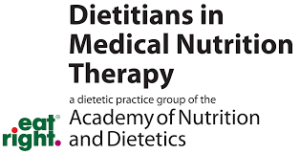What is fructose intolerance?
Fructose intolerance is a condition where fructose is poorly absorbed from your intestines. Fructose is a type of simple sugar found naturally in some foods. It can also be added to processed foods and drinks as a sweetener.
You should follow a low-fructose diet to avoid causing symptoms of malabsorption (when nutrients aren’t digested or absorbed from food). These symptoms include gas pain, bloating and/or diarrhea, usually within 2 to 8 hours of having food or drink with fructose.
Because symptoms of dietary fructose intolerance are generally “dose dependent,” you may find that you can handle very small portions of some of these foods if the rest of your meal is low in fructose. You may have symptoms when you eat fructose in its pure form or foods than contain more fructose than glucose (another simple sugar).
Eating for fructose intolerance
Fructose can be found in some natural foods — like fruit juice, smoothies, certain fruits or sweeteners — as well as in processed foods that contain certain added sugars, such as high fructose corn syrup (HFCS). You will need to avoid fructose-containing foods on a low-fructose diet.
Pay special attention to labels for sodas and soft drinks, condiments (e.g., ketchup, sauces), salad dressings, flavored yogurts, cereals, granolas, breads, cakes, cookies, and baked beans. Many sports nutrition products, such as energy drinks or bars, may also contain fructose. It is important to read medicine/supplement labels carefully to avoid ingredients that may cause problems or symptoms.
Examples of some common high fructose foods/ingredients to stay away from:
- Agave nectar
- Fructose or crystalline fructose
- Honey
- Karo light corn syrup
- Fruit juice concentrates
- Apple
- Pear
- Watermelon
- Cherries
- Figs
- Mango
- Asparagus
- Broccoli stalks (florets should be fine)
- Fruit juice or cider (even if from lower fructose fruits)
- Fruit smoothie drinks
- Soda
- Sports drinks or soft drinks sweetened with fructose, honey, agave nectar or high-fructose corn syrup
- Fortified wines (e.g., sherry, port)
- Rum
Side effects may include back pain, aching, cough, headache, dizziness, belly pain, gas, nausea, throwing up, constipation and diarrhea.
- Any breads, cookies or commercial pastries made with high-fructose corn syrup
- “Pancake syrup” (these usually contain high-fructose corn syrup; however, 100% pure maple syrup is allowed)
- Jams/jellies sweetened with high-fructose corn syrup, fruit juice concentrates
- Honey mustard sauces/dressings
- Relishes made with high-fructose corn syrup
- Apple butter or pear butter
- Ketchup and BBQ sauce (made with high-fructose corn syrup)
- Honey-baked ham
- Protein bars made with honey, agave or dried fruit
- Certain low calorie yogurts (e.g., “80 calorie lite yogurts”) sweetened with fructose
- Greek yogurts with honey on the side
- Commercially baked cookies, cakes and crackers made with high-fructose corn syrup
- Pastries made with honey (Baklava, honeycakes, honeybuns)
- Fruit tarts, pies or danish made with high fructose fruits or commercial pie fillings
- Fig Newton cookies and other fig-filled treats
- Cereal, granola or granola bars containing honey
- Natural/organic lollipops/candies made with honey or agave nectar
- Caramels
- Fruit leathers or dried fruit bars
- Certain gummy candies or fruit chews (including some gummy supplements)
- Applesauce or other fruit purees containing apple/pear
- Sorbets made from high fructose fruits (e.g., mango sorbet)
- Ice cream sweetened with high-fructose corn syrup
WRITTEN by

Emily Haller MS, RDN, and Carol Ireton-Jones, PhD, RDN, LD, CNSC
Reviewed by the DIGID Disorders of the Brain Gut Interaction workgroup ©March 2021

Emily Haller MS, RDN, and Carol Ireton-Jones, PhD, RDN, LD, CNSC
Reviewed by the DIGID Disorders of the Brain Gut Interaction workgroup ©March 2021


